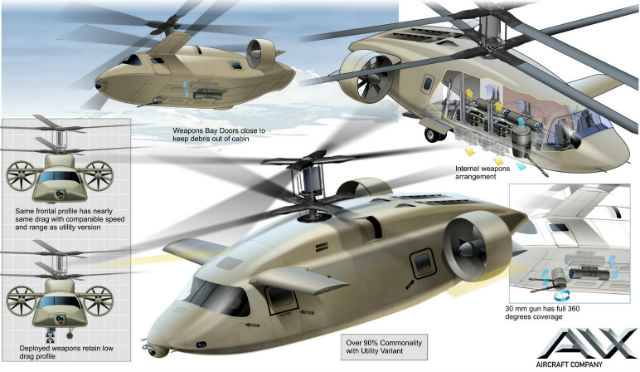4bars
Full Member
- Joined
- Feb 10, 2016
- Messages
- 6,542
- Supports
- Barcelona
Nationalized defense industries simply do not work well, and it has nothing to do with privatization, capitalism and what not. The problem, is also not with innovation or lack thereof.
The problem is that militaries, governments and armed forces, broadly speaking do not know what they want. This is a hard cap that has plagued armed forces of all nations for thousands of years. Back then it was simpler times, because mass producing spears, shields and metal swords is far easier than 5th generation avionics.
The problem is because the people who understand the forefront of engineering, the people who understand current technological innovation and how far things can be pushed within the next decade, do not work for the military by nature of who they are. Now, you might ask, why don't we just nationalize the companies that DO know? Well, then you'd run into the problem of having to nationalize everybody. This might seem a bit confusing but let me explain with the example of the F-35 procurement roadmap, which has, despite public opinion to the contrary, been a very successful procurement program.
The Air Force wanted a Lo part of the Lo-High equation of their fleet airforces. The cheaper, more numerous and easier to produce alternative to what was then the F-22 (and in the future the lo of the NGAD projects). The Airforce did not know what was technically feasible in 10 years time during the initial design phase of the JSF program. Their requirements were basically - needs to cheap, needs to be stealthy, needs to be have a STOVL and CATOBAR variant, needs to be more maintainable than previous hangar hoggers, needs to be able to carry standard AIM missile series etc etc. Notice how these requirements don't contain any real technical details? How stealthy? What RCS value does the plane need? What cruise speed does it require? How cheap? Cost per airframe?
This is by design. The project says, "here are our requirements, knock yourselves out." The competing private companies will all consolidate with their private sector partners - Engine companies, Materials producers, radar companies, aeronautics parts suppliers, etc etc etc until they amalgamate all of their knowledge together to put forward a prototype design, that incorporates all of the latest tech available in each civilian sub-sector. Military technology is simply an accumulation of all the latest top end civilian technology, put together to form a weaponized platform. Who knows most about civilian tech? The government? No, the people who make the civilian technology themselves.
So Lockheed Martin got together all their subcontractors for each section, their primary engineers and built together a prototype called the X-35. The X-35 would cost A, with flight characteristics, B,C,D,E etc etc. Boeing did the exact same, leveraging all their accumulated knowledge of the civilian sector and built a prototype, the X-32. Their characteristics were also displayed. What the Government here is doing is divesting competing products in a market environment to the people who know the market best. If the government handled a project and gave requirements and a prototype was made, how do we know its the best it can be? It doesn't have any other benchmark to compare it against, isn't leveraging all of the private sector to chip in and to put all their knowledge and expertise together. If what you're suggesting is that a government military hardware producer then just outsources the work to the private sector suppliers anyway, don't we just have privatized military contractors by proxy? What's the difference other than a layer of bureaucracy.
X-32 vs X-35 competed. X-35 came out on top with the best specifications, pushing its competitor out the water. Government made a deal with Lockheed, the X-35 becomes the F-35A,B,C variants and the rest if history.
Now, compare to a project that went disastrously, the LCS (Littoral Combat Ship) project. Or rather, the independence class and Freedom class.
Specifically, I am going to talk about a specific requirement, the Mission Modules.
Someone in the Navy decided, "Hang on a minute, wouldn't it be awesome to have combat ships that can swap out at dock what their speciality is in a few hours so it can serve as a ASuW ship, ASU ship, AA Ship, Littoral Gunboat, all at the same time by swapping out modules! This saves us so much manpower and cost and means we don't have to build so many different ship types"
The requirements for LCS unfortunately gave this very very specific requirement. Mission modules. All the bidders for this project MUST HAVE mission modules. Rather than high level requirements that contractors could compete against, you were now provided quantifiable hard requirements. Requirements that were not grounded in reality of the technological competency of the time. This means that all the bids for LCS came with "Yeah we will research and build Mission Modules." The Government (Navy) had no idea what the technical limitations were or the tech requirements, but imposed them anyway. If the contractors wanted to win the projects, they would have to agree to this. The JSF F35 project was the Civilian Private Sector defining what capabilities could be built, the LCS project was the government insisting it must meet these capabilities that may not even exist.
Fast forward two decades to now, and the Littoral Combat Ships got built and are being retired because the Mission modules that all the contractors bid on and agreed to build turned out to be technologically unfeasible at this moment in time.
A quote from a former naval officer on a forum highlights this
Hope these examples made sense.
If you want to see a simple analogy:
A Government Weapons procurement process is like an F1 season. All the engineering teams compete to see who can build the best racing car and at the end one constructor wins the championship (The contract with the government).
Thanks a lot. It is always great to read your explanation in military expertise




